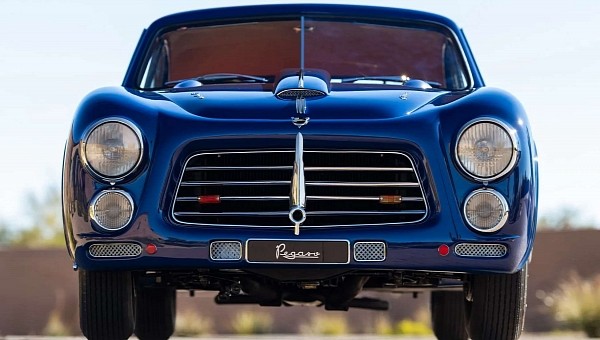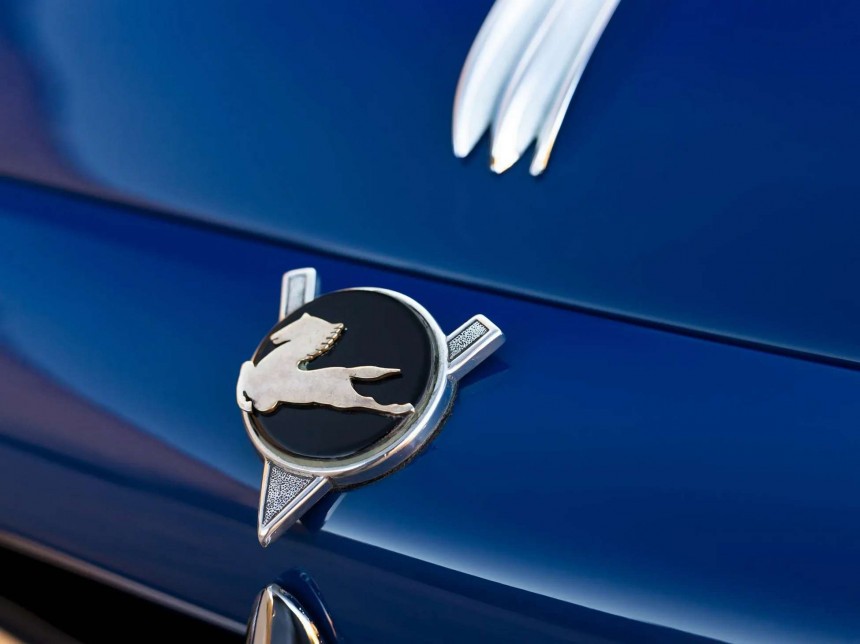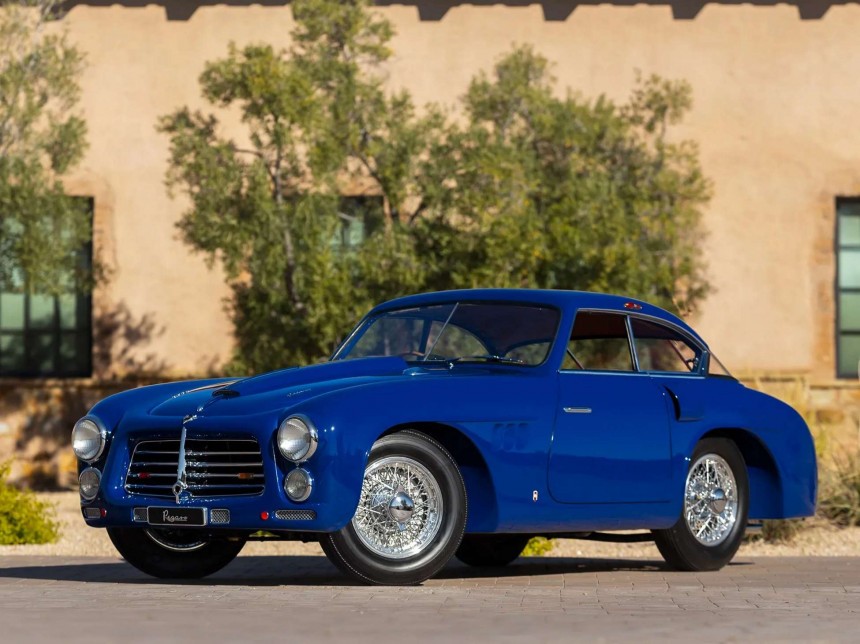Back in the '50s, a truckmaker created the fastest car in the world, but its price was so big that less than 100 units were built in eight years, and even fewer survived. This one not only did that, but it even made it across the pond in the U.S.
After the Spanish civil war, the country's economy was in bad shape. It was so bad that only a few investors dared to put their money at stake to start a new business there. That's why the government decided to invest and create new factories, develop industry, and imagine new development plans. But for that, they needed trucks, and Spain had no truckmakers. So they created one named ENASA, an acronym for the Empresa Nacional de Autocamiones S.A. (National Factory for Trucks).
They were founded in 1946 and started to build trucks and buses, which were needed for the country's development. At that time, the company's GM was the engineer Wilfredo Ricart. He was born in Spain and worked for Alfa Romeo's racing department. Obviously, his dreams were more about speed than heavy trucks or buses. But he had to postpone his dreams for a while. How long? Well... not that much.
After he convinced the board and the government's representatives that a sports car would put Spain on the motoring world map, he created the Pegaso. The mythical winged horse became the brand's badge, and the result was incredible. So, in 1951, the sports car was unveiled at the Paris Motor Show and immediately became the main attraction for all visitors. Everybody came to the Spanish booth to see the marvelous machine that promised to beat Ferrari at its own game.
Unfortunately for Wilfredo, not all of them had the money or the mood to spend on the Pegaso Z-102 vehicle since it was twice as much as a Ferrari and four times more expensive than a Jaguar XK120. But still, there were enough orders to start series production. Immediately, the Spanish company started building vehicles, but only 19 of them were fitted with Berlinetta bodyworks produced by ENASA. Others were bodied by small coachbuilders in Barcelona and in Italy by Carozzeria Touring. In the end, there were only 83 vehicles built, and about 60 are still known to exist.
The car that you see here is one of those 19 vehicles, so you may say that it's an original vehicle. It still has the original engine in it, which was a work of art for those times. Remember, folks, we are talking about a 1952 vehicle that featured a DOHC V8 engine under the hood. Its 2.8-liter powerplant produced 170 PS (168 hp) at a stratospheric (for those times) 6.300 rpm. Power went to the rear wheels via a five-speed manual. To help the weight distribution, Wilfredo placed the gearbox behind the rear axle. So, you may say that it is a reversed transaxle solution. But it worked flawlessly.
In terms of performance, the light 990 kg (2,183 lb) vehicle could reach a top speed of 225 kph (140 mph), which was astonishing. It was faster than the coveted Jaguar XK120, which couldn't get more than 212.16 kph (131.83 mph) in 1951.
But the Spanish engineer that led the factory knew a thing or two about sports cars (at that time, these were not called supercars). He was aware that the luxurious items were a must-have for these kinds of vehicles, so the Pegaso Z-102 Berlinetta featured a leather-wrapped interior, chromed trims on the doors, and a well-organized instrument panel. Thus, he placed the main warning dials in front of the driver, flanked by the speedometer on the left and the tachometer on the right. If you look at the gear stick knob, you'll notice that it was shaped to fit better in the driver's hand.
ENASA built these vehicles until 1958, when an official from the Spanish Minister of Economy took a second look at the car's price compared to other sports cars. Suddenly, he realized that the Z-102 couldn't get the same sales numbers as its competitors. Even though it was the fastest production vehicle in the world, it was way too expensive. He pulled the plug on the project and asked the factory to focus on their main job of building trucks and buses. And that was the end of the Pegaso brand.
But some vehicles were sold, and this example made it to the U.S. It was restored in this blue over red color scheme. Even though it is still authentic, its original twin carburetor setup was replaced by a single one. The restoration process was so good that in 1994 it won the top prize in the Pegaso class. In addition, it is worth knowing that this year, in 2023, Pegaso will be the featured brand at the Pebble Beach Concours d'Elegance. So, if you want to steal the show, you have a big chance with this example that is sold via RM Sotheby's at an auction in Phoenix, AZ, on January 26.
They were founded in 1946 and started to build trucks and buses, which were needed for the country's development. At that time, the company's GM was the engineer Wilfredo Ricart. He was born in Spain and worked for Alfa Romeo's racing department. Obviously, his dreams were more about speed than heavy trucks or buses. But he had to postpone his dreams for a while. How long? Well... not that much.
After he convinced the board and the government's representatives that a sports car would put Spain on the motoring world map, he created the Pegaso. The mythical winged horse became the brand's badge, and the result was incredible. So, in 1951, the sports car was unveiled at the Paris Motor Show and immediately became the main attraction for all visitors. Everybody came to the Spanish booth to see the marvelous machine that promised to beat Ferrari at its own game.
Unfortunately for Wilfredo, not all of them had the money or the mood to spend on the Pegaso Z-102 vehicle since it was twice as much as a Ferrari and four times more expensive than a Jaguar XK120. But still, there were enough orders to start series production. Immediately, the Spanish company started building vehicles, but only 19 of them were fitted with Berlinetta bodyworks produced by ENASA. Others were bodied by small coachbuilders in Barcelona and in Italy by Carozzeria Touring. In the end, there were only 83 vehicles built, and about 60 are still known to exist.
In terms of performance, the light 990 kg (2,183 lb) vehicle could reach a top speed of 225 kph (140 mph), which was astonishing. It was faster than the coveted Jaguar XK120, which couldn't get more than 212.16 kph (131.83 mph) in 1951.
But the Spanish engineer that led the factory knew a thing or two about sports cars (at that time, these were not called supercars). He was aware that the luxurious items were a must-have for these kinds of vehicles, so the Pegaso Z-102 Berlinetta featured a leather-wrapped interior, chromed trims on the doors, and a well-organized instrument panel. Thus, he placed the main warning dials in front of the driver, flanked by the speedometer on the left and the tachometer on the right. If you look at the gear stick knob, you'll notice that it was shaped to fit better in the driver's hand.
ENASA built these vehicles until 1958, when an official from the Spanish Minister of Economy took a second look at the car's price compared to other sports cars. Suddenly, he realized that the Z-102 couldn't get the same sales numbers as its competitors. Even though it was the fastest production vehicle in the world, it was way too expensive. He pulled the plug on the project and asked the factory to focus on their main job of building trucks and buses. And that was the end of the Pegaso brand.


















